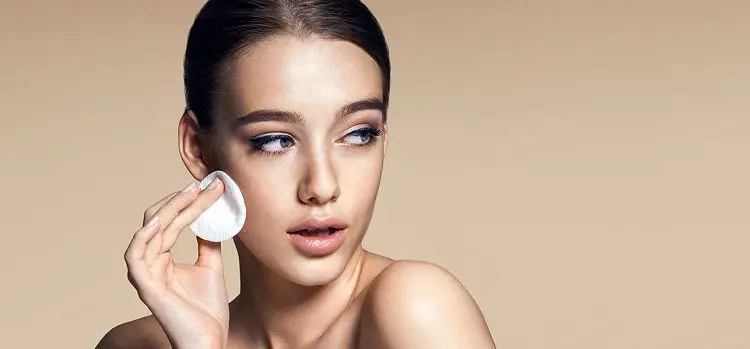Flawless, blemish-free skin is hard enough to achieve even for a 20-something-year-old skin. Can you imagine how much more difficult it is to achieve the same feat for aging skin?
Age spots on the face are a normal sight to see when you have mature and aging skin type — but, that should not always have to be the case.
What causes age spots?
Other than wrinkles, it is age spots that men and women who are dealing with aging skin are almost always concerned about. People who are older and even those who are younger but have fairer skin are at a higher risk for manifesting age spots.

What are the symptoms of age spots on skin?
Age spots appear on the most exposed areas of the skin: face, neck, chest, nape, arms, and back of hands. These spots range from light brown to black in color. Age spots can dot your skin or, show up in clusters which give your skin an uneven tone. Age spots are flat against your skin and show signs of hyper pigmentation.
When marks on your skin that appear like age spots are painful, swollen, change in color or, bleed, these can signal an underlying medical condition. In which case, your healthcare provider may recommend you to undergo a series of tests to find out for certain what is causing you to show these dark spots.
Skin experts may have different opinions on what causes age spots but, they all agree on one major factor: excessive sun exposure. When UV reaches your skin, UVA, the deeper penetrating UV, does damage to the deeper layers of your skin, that includes affecting how your skin cells produce melanin, the pigment responsible for your skin color. Decades of sun damage and multiple skin turnovers later, the damage caused by UVA deep within your skin eventually show up on the surface as age spots.
UVB, on the other hand, burns the superficial layers of your skin. When your skin burns, your skin cells send a battalion of melanin to the surface in an attempt to stop your skin from burning. In this process, uneven pigmentation can also occur, causing age spots to show. Both UVA and UVB exposure, therefore, contributes to age spots on skin.
Other possible causes of age spots are senescence, hormonal fluctuations, and liver disease.
Can age spots be vanished?
There’s no doubt that you can make your pesky age spots go away — for good. What are the best treatments for age spots? Here are your top treatment option:
Skin lightening cream

Make sure to use the appropriate product for your face and body. The most effective skin lightening cream, to date, remains to be hydroquinone. However, this ingredient has lost its popularity following the conclusion of several studies that have marked it as a suspected carcinogen. As a result, European countries and Japan, among others, have banned this ingredient from all personal care and cosmetics products sold in their territories. Although, in the US, the FDA maintains a status quo approach. Hydroquinone below 2% concentration are still being distributed as an OTC product while creams that contain 2% to 4% concentrations are sold only by prescription.
Since then, the next top alternative is Vitamin A and its derivatives, including retinol. The biggest drawback with Vitamin A-based skin lighteing is that it thins out the skin, causing the skin to become more prone to sun damage. Other natural skin lightening options have emerged, that includes licorice extract, papaya extract, and kojic acid.
Exfoliators
By exfoliating your skin regularly, you are encouraging your skin to turnover faster. This way, the damaged layers that bear the marks of your age spots can come off sooner. Exfoliation also signals your skin to produce a spotless, more resilient layer to replace the damaged ones. You can exfoliate at home using OTC chemical peels.
Given the high risk of bleaching, you should refrain from using such products and turn to at-home peels instead. Another option is to get professional exfoliation, most especially when your dark spots are severe and occur over a larger area. Your choices include professional chemical peels and microdermabrasion.
Laser Skin Therapy
In essence, laser resurfacing technologies use the same principles as exfoliation. These procedures use varying wavelengths of laser lights to deliberately and systematically wound your skin to cause it to regenerate faster and turnover skin sooner. The key advantage of these treatments though is that laser allows for precision and accurately destroys only the damaged areas of your skin, leaving surrounding skin unharmed and intact.
Oral supplementation
Supplementing with antioxidants is another way to lighten age spots. How can skin lightening pills vanish age spots on face and body? These pills either reverse pigmentation or inhibit melanin production, usually by blocking tyrosinase, the enzyme that produces melanin.
The most popular oral supplements for skin lightening are Vitamin C and glutathione. If you decide to take this route to lighten age spots on skin, make sure to take only as indicated on the label because it is possible to overdose on Vitamin C and glutathione.
Face Mask
To address dark spots on face, soaking your skin using masks loaded with high concentrations of natural ingredients known to have astringent properties, like Vitamin C, papaya extracts, lemon and tangerine, can help even out your skin tone too. Professionally administered masks, such as Cosmelan, can be another option.
Conclusion
With so many available treatments to vanish your age spots, you will never again have to endure being the class or office Dalmatian. Although, while many treatment options are readily available, you should make age spots prevention a must for your skin care strategy from now on.
Start by giving yourself better sun protection. Soon enough, you will realize how valuable practicing prevention can be. Mind you, giving your skin enhanced sun care not only prevents more age spots from manifesting but also, helps you evade premature aging longer.
Revision 4.7.2020 – 404 link removed








































